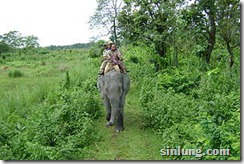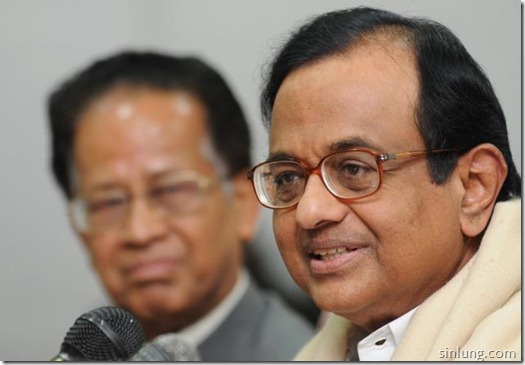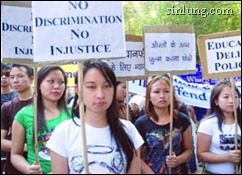Dr Mustafizur Rahman
Dr Mustafizur Rahman currently the Executive Director at the Centre for Policy Dialogue (CPD), is also a member of the Panel of Economists for the Sixth Five Year Plan. He was recently selected as a member of the National Task Force to monitor the impact of the global financial crisis on Bangladesh. He gave his views on the recently signed Bangladesh-India deal to The Daily Star
DS: How do you see the India-Bangladesh deal?
MR: From the economic perspective, there is potential for Bangladesh to gain from the deal. India remains a major trading partner of Bangladesh. In 2007-08, we imported about $3.3 billion worth of goods from India. In spite of global economic meltdown, in 2008-09, Bangladesh imported $2.8 billion worth. On the other hand, we exported about $360 million worth of goods in 2007-08 and in spite of financial crisis we exported $275 million worth in 2008-09.
There are three aspects where Bangladesh has the possibility of gaining something from the deal. They are: trade cooperation, connectivity cooperation, and infrastructure cooperation.
I see these areas originating from this pact. Lets start with trade.
Trade cooperation: There is an understanding that India will reduce the negative list; 47 items will be excluded. India started the negative list with 770 products under SAFTA in 2006. However, there was a decision that every three years there would be a reduction in the negative list under SAFTA. For Bangladesh, India started to reduce it at a faster pace. They reduced 480 items from the list. Then they reduced further. Now there are 260 items from which they are going to reduce an additional 47 items.
Yet, we don't know what items India is going to remove from their negative list. We have to look at it. The government should disclose the list so that one can evaluate the economic side of the pact.
The second point is non-tariff barriers (NTBs), which is a major impediment. As per the discussion, India will also reduce NTBs. India has said that it will strengthen the BSTI, which is a good move. India is already contributing to strengthening BSTI; so, the move will contribute to capacity building of product standardization that will help to reduce some of the NTBs as well.
However, it would have been better if a "framework agreement for mutual recognition of standard" could be signed between BSTI and BIS.
As we have not yet signed the deal between BSTI and BIS, what will ultimately happen to reduction of the negative list?
think that India perhaps wanted to strengthen BSTI and then go for this mutual recognition. Since the deal has been signed, I think this thing will be expedited.
The NTBs on Bangladeshi products may be removed. Those are now being exported under zero tariff benefits; but 10% of the duty at the Indian border point has been waived for eight million pieces of garments exported from Bangladesh to India under a special scheme.
There are also 8% to 13% other duties, including excise duties (4% to 8% on import duty and MRP), secondary and higher secondary duties (3% customs duty), and special additional duty (SAD).
Although Bangladesh has been enjoying 10% waiver on duties at Indian border points as most favored nation (MFN), there are other duties that add up to 8% to 13% for various types of apparels. This is also one barrier, but these duties are also applicable for Indian inter-state product transaction.
SAD amounts to 4% on all duties paid, which is yet to be settled. Since they said that they would remove NTBs, duties like SAD, which are not related to standardization, will expectedly be removed in the spirit of the deal that has been signed.
Connectivity: We can explain the connectivity opportunity in two ways: connectivity for exporting goods and services, and the other is reducing cost of imports. Connectivity can stimulate these things.
Connectivity with Nepal and Bhutan will be an advantage. We can use our transport services and port services by utilizing under-utilised ports. We can utilize the excess capacity of the upcoming Newmooring container terminal.
All parties, even opposition leaders, also said that there was excess capacity in our ports. This could be export of services.
Bangladesh can earn Tk.15 lakh by handling a 700-container cargo at the Chittagong port. Mongla port has become redundant. It could get rejuvenated now.
What has been interesting recently is that Bangladesh's export to India is increasing. In 2002- 2003, our export to India was worth $60 million. In 2003-04 it was $66 million. In 2007-08, it rose to $358 million and in 2008-09 it was $277 million. So there are new export items going to India now beyond our traditional export items -- raw jute, fertilizer, jute goods, fish, and frozen foods. The new items include plastic, melamine, batteries, juice and foodstuff, and cement.
Can you give us any other example of the way Bangladesh is going to allow other countries to use its ports ?
There are many similar examples in the world. The port of Rotterdam is the largest port in Europe, serving more than seven to eight countries in Europe.
But a massive investment might be required for Bangladesh to upgrade the ports. How we can manage the money?
I am coming to that point.
Do you think Bangladesh will lose its existing export market to north-eastern Indian market?
In 2007-08, Bangladesh imported $84 million worth of goods from the north-east and exported $30 million worth, which is a nominal amount of total trade with India. In the same year, Bangladesh's total export to India was $358 million worth and import from India was $3.3 billion.
So the argument is that north-east states contribution to the total Indian GDP and per capita income has been declining in last few years because it is a backward region and its capacity to purchase and capacity to import are also very low.
In 2007-08, Bangladesh exported $14 billion worth of goods. So, compared to that, $30 million export to north-east region is peanuts. So my argument is that if the north-east develops economically through this greater connectivity, and its standard, its income and purchasing power increase, then exports from Bangladesh will go up. Bangladesh's chance of exporting to north-east will remain because of its geographical proximity.
We can also formalize the informal cross-border trading. If Bangladesh develops its supply side capacity, then the north-east market will remain for Bangladesh.
How will the Indian north-east develop?
The Indian government is going to set up a 750 MW power plant in the north-east, which was not possible earlier because of the difficulty in carrying equipment to the site. The north-east's backwardness will be removed through connectivity under the deal; so, more investment and more demand will be created in the north-east. Bangladesh can even invest in the north-east. And, if the north-east gets access to Chittagong port, they can export at a competitive price.
What would be the price mechanism for utilizing ports?
Of course, pricing should be fixed in a competitive way. We should consider what options India now has and what they cost. Based on that, the price for port utilization could be fixed so that it will be win-win for all.
For example, If India's businessmen now spend Tk.15 to carry goods to the north-east, they will use Bangladesh's infrastructure if the cost goes down to Tk.10. And here, if Bangladesh's port charge is Tk.7, Bangladesh should charge Tk.10 to India. So the pricing mechanism also has to be win-win.
Since we import a lot from India, it is possible to supply goods to consumers at an affordable price. Many entrepreneurs import raw material. It is also important for many exporters, because they import fabrics for exportable product.
The import from India increased in last few years because India became competitive. So, trade diversion favoring India occurred. Now, because of better connectivity under the deal, cost of import will also come down for Bangladesh.
If there any scope for Bangladesh to develop its infrastructure under the pact?
We import more from India than India imports from us. Under the deal, $1billion will be utilized for infrastructure development, including port and broad-gauge railway.
It is very important to identify the areas that will be developed under the $1billion package. If we also invest, along with the $1 billion, our import costs can be minimized.
If we can reduce even 10% of import costs, it will be equal to our total exports to India.
All the infrastructure development with $1 billion will have to be completed through concrete projects. These projects should be priorities because, in terms of required investment, $1 billion is peanuts compare to what we need.
So we have to identify the areas in which we can gain maximum benefit.
Infrastructure is not ready, yet, to carry goods from north-east to western India. It will be better for Bangladesh to go for transshipment business to carry Indian goods on that route.
If Bangladesh provides the transportation service, it will be better. The deal does not mention anything about the transportation system. So, there is lots of homework that needs to be done in order to take the spirit forward.
We should work more so that our trucks can carry the goods. In terms of costs, if Bangladeshi trucks can provide cheaper service, India businessmen will seriously think about it.
We should explore the deal more so that Bangladeshi entrepreneurs can get the business from the connectivity. If Bangladesh takes a large part of the transport business under the deal, it would maximize the benefit from the deal.
Will it create any problems in loading and unloading?
It could happen two ways. Indian trucks will carry goods to border point, then Bangladeshi trucks will carry them to the port; or Indian trucks carry the goods directly to the ports. Another thing that can happen is that that Bangladeshi trucks will enter India and carry all goods to port and other points. This will reduce cost of carrying goods as a whole.
So there are several options: Indian trucks at border transport to Bangladesh, Indian trucks through Bangladesh to ports, under which Bangladesh gets less benefit. If we get trucking business, maximum benefits will come to Bangladesh.
This transportation could be on sharing basis. Suppose there could be an agreement under which Bangladesh and India both can share in carrying goods. So, all the options should be examined so that we can maximize our country's benefits.
What could be the deal with Bhutan and Nepal?
Our trade with Nepal and Bhutan is very limited. But if they are allowed to use what has been agreed, they will trade with third countries through Mongla and Chittagong port, which will also give business to our two ports.
Is there any possibility that Bangladeshi traders will not get enough slots to use the ports after these three countries start utilizing the ports?
We should look at this agreement as a business. If we can earn $3 by spending $1 then we should go for capacity expansion. As of now, it will not create problems, as there is excess capacity.
Opposition leader Khaleda Zia said that Mongla and Chittagong port has excess capacity of 60 percent, and 40 percent respectively, while the prime minister said that it was 90 percent in Mongla and 40 percent in Chittagong
That is not the issue. The issue here is that if we invest and earn then we can expand.
Do you think only enhancement of port capacity is enough?
Of course not. We will have to so many things to do, from logistics to transportation. If we fail to give affordable services, India could continue using existing routes. If the cost in Chittagong and Mongla remains high, India will not use them. Our intention should be to lower price so that India is attracted by the offers to shift its routes.
At this moment, what should the Bangladesh government do?
It will be very challenging to materialize what we have discussed. The political spirit of the deal now remains. But when it is implemented at the bureaucratic level, lots of options need to be decided: should we go for infrastructure development for giving transit to Nepal and Bhutan, or we should develop the ports first, etc. To implement the projects, priorities should be identified.
We should speed up BSTI strengthening projects to go for mutual framework agreement. The Indian prime minister is expected to visit Bangladesh. So, at that time, the deal should be signed on priority basis.
We have rail connectivity already. So, initially, it is possible to connect with railway; but development of a broad-gauge line between Akhaura and Tripura should be started.
You were talking about railway. Do you think by implementing the rail transit, Bangladesh railway will recover from being a loss-making concern?
Yes, there is a big potentiality. If we can take the cheapest cargo movement business, railway obviously performs better. It will be easier if containerization of cargo can be ensured.
What should the government do at this moment to follow the pact?
Follow up is very important. I heard that the government is following it up by forming some committees. A high-powered taskforce should be formed to prioritize what to do. And here our national interest should be the top-most consideration.
via The Bangladesh Daily Star
 It is crucial that forest staff & patrol elephants have regular health check ups
It is crucial that forest staff & patrol elephants have regular health check ups 






 (Left) Rongsenkala, producer of the ‘Distant Rumbling’ (Right) a still from the film which bagged the National Film Award in the Investigative Documentary Category on January 23, 2020.
(Left) Rongsenkala, producer of the ‘Distant Rumbling’ (Right) a still from the film which bagged the National Film Award in the Investigative Documentary Category on January 23, 2020. 

 Karnataka Governor H.R. Bhardwaj with the CM B.S. Yeddyurappa at Raj Bhavan in Bangalore.
Karnataka Governor H.R. Bhardwaj with the CM B.S. Yeddyurappa at Raj Bhavan in Bangalore. 


